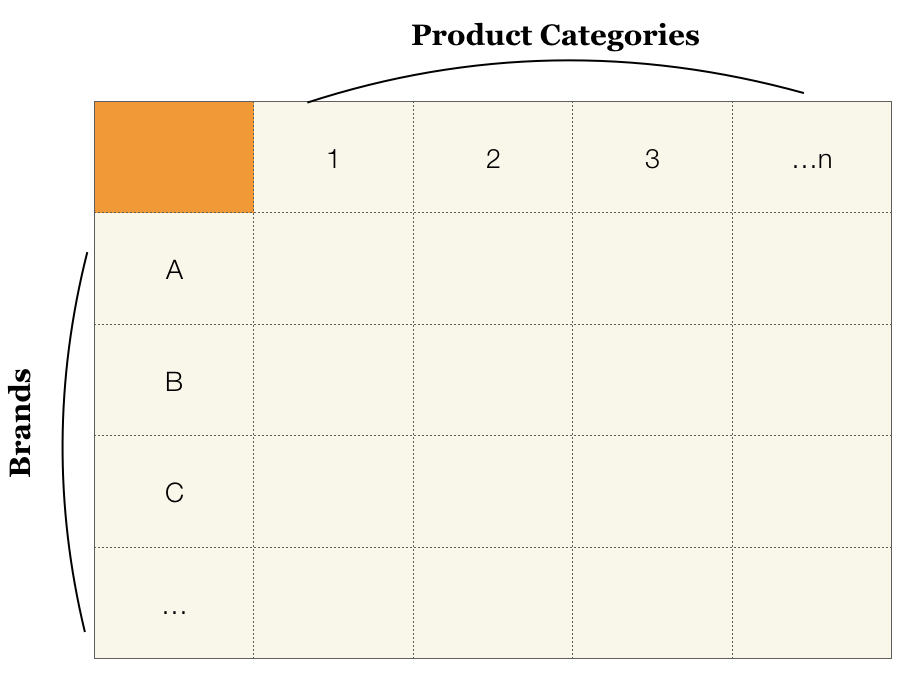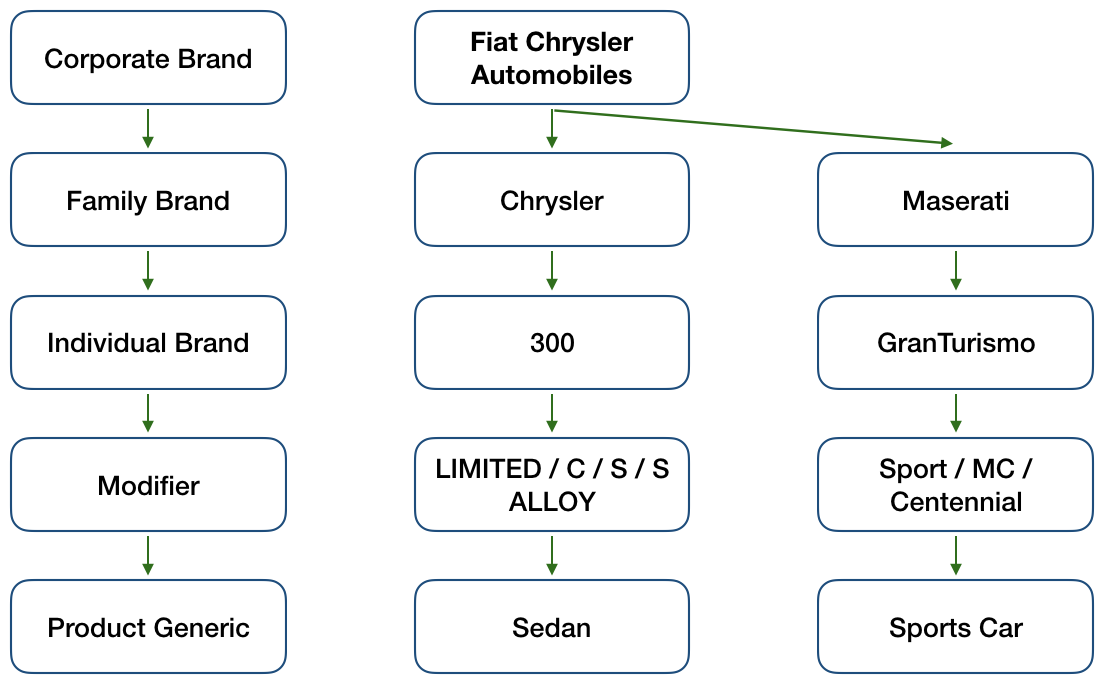Brand architecture is an arrangement of brands within an organisation or company. It allows businesses to tidy up diverse portfolios so that businesses are able to find differentiation and similarities within those portfolios. Not only that, brand architecture will also give a clear display of what, and how brands should expand into new categories, including: brand or sub-brand extensions, and new product development.
Brand architecture can be established in three different ways:
- Brand Product-Matrix
- Brand Hierarchy
- Brand Relationship Spectrum
This article will discuss only the first two brand architectures, which is brand-product matrix and brand hierarchy.
Brand Product-Matrix
Brand product-matrix focuses on the overview of activities for each brand and helps businesses to assess what type of product category is available for consumers at the moment. All brands are represented in rows and the columns represent the product category as shown in the image below.

In the brand product-matrix, each column represents each brand, the depth of the company portfolios within a single category. While the row represents the product categories, the breadth of each product category that the business covers.
The depth in the brand product-matrix is useful in evaluating what kind of market segments and offerings that businesses have already covered in a category. An example is Unilever and its four different deodorant brands: Axe spray, Dove, Rexona and Vaseline. Each sub-brand represents different ‘personalities’ for different target markets and segments.
The breadth in the brand product-matrix is useful in giving an overview of the product categories covered. For example, Coca-Cola covers carbonated drinks, mineral water, juice and tea beverages. Each brand represents different types of products for consumers.
Brand Hierarchy
Brand Hierarchy structures the brand with they key brand elements and modifications. It allows businesses to capture the order of the brand elements and features in a structural level. Brand hierarchy starts with the corporate brand, family brand, individual brand, modifier and descriptor. The example is as shown below.

Both Brand Product-Matrix and Brand Hierarchy will help businesses to:
- Evaluate and create structures in business’ portfolios
- Gain a clearer overview of their brands and future brand extension
- Assess the brand’s key features and differentiations with the competitors, and given room for improvement for further product development
- Prevent brand-clash, in which businesses are offering the similar features or PoDs of a product or service of an already existing brand

